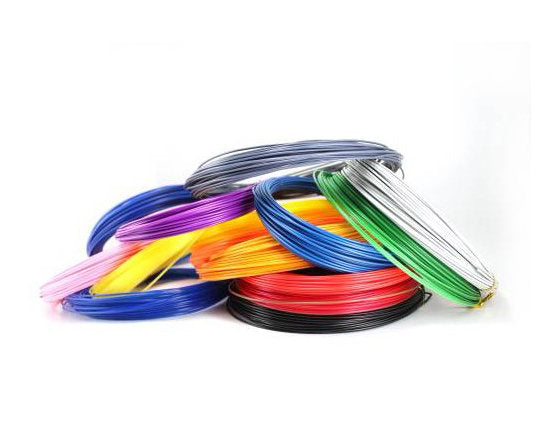
If you want intricately detailed and stiff non-functional prototypes, PLA filaments are for you. PLA is one of the most popular filaments out there due to its ease of use and malleability into different shapes when heated. What makes PLA one of the most used filaments? Here’s an overview to help you find out.
What is PLA?
PLA (Polylactic Acid) is a biodegradable thermoplastic that is available at affordable prices. It is typically made from renewable resources, such as tapioca roots, sugar cane, and cornstarch. It is similar to ABS in the FDM desktop technology, but it has several noticeable differences, too.
- Smooth and shiny prints: PLA is one of the easiest filaments to print with that can produce smooth and shiny prints.
- Environmentally friendly: Since PLA is biodegradable, its byproducts will degrade in a span of six months to two years when it ends up in the ocean.
- Pleasant to the nose: Due to its sugar-based composition, PLA gives off a sweet scent. This makes it non-toxic and less bothersome to print with than ABS.
- Stiffness: PLA prints is a lot harder and stiffer than ABS. However, its stiff demeanor makes it more brittle, so it is not recommended for high-wear and heavy-duty parts.
- Low heat tolerance: It is sensitive to high temperatures. Just storing PLA in hot rooms can cause warping, cracking, or melting in your prints.
As mentioned above, avoid using PLA for mechanical parts and prints that will be exposed to hit and constant stress. PLA is better-used arts and crafts models, toys, and other aesthetic applications. It also comes in different blends give different appearances to your prints. Some of these examples include translucent PLA, glow-in-the-dark PLA, wood PLA, stone PLA, metal PLA, twinkling PLA and more. Hobbyists and artists alike will find 3D Printing with PLA easy and enjoyable, which makes it the perfect filament for them.
PLA 3D Printing guide
Before printing, you need to make sure that:
- The print bed is leveled
- The extruder is set in the correct height
- The base material will adhere well to the PLA
You have three options for the print surface: blue tape, Kapton Tape, polycarbonate, or directly on the heated bed.
- Blue tape: Avoid heating the bed when using this as it will prevent PLA from sticking to it. Replace the tape when you notice that it’s losing its stickiness or after 5-10 prints.
- Kapton Tape: Kapton tape works best with a heated bed.
- Polycarbonate: Use polycarbonate with a slight touch of vegetable oil. While it produces great prints, it can be difficult to remove.
- Directly on the heated bed: The key to successful 3D Printing with PLA on a * heated bed is to ensure that the bed level and extruder are at the perfect height.
PLA Print Settings
Each PLA blend has a different optimal print temperature, so it is still best to consult with the manufacturer of the PLA that you’re using. However, the consensus is that PLA has a melting point of 180 to 200 °C. Meanwhile, its glass transition temperature lies between 60 to 65 °C. Anything beyond makes the plastic rubbery or viscous. Print bed temperature should be 50 to 60 °C in order to get the first layers to stick right.
PLA is the perfect entry-level filament for 3D printing novices and hobbyist. May this PLA 3D Printing guide help you in creating your first PLA print. If you have any questions about the many blends of PLA filaments, call our hotline at 08 6380 7488. You can also enter your prints into our competition to win 5 free filaments. Click the banner below for more information.

